Anti-tank capabilities of American aviation during the Second World War
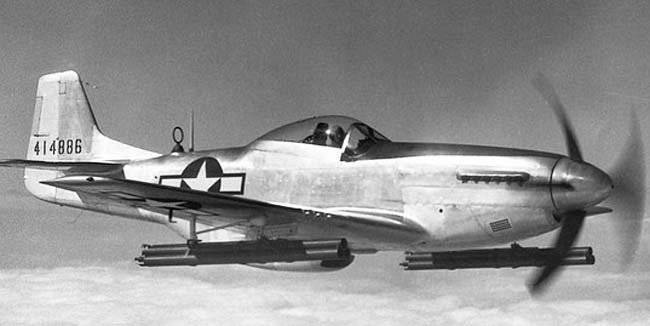
Prior to entering World War II, the United States did not have specialized combat aircraft designed to combat armored vehicles. Work in this direction began later than in other countries and, despite the creation of a number of flying prototypes, did not end with the adoption of real samples.
In the future, to combat tanks, in addition to fighter-bombers and light bombers that launched airstrikes using rockets, napalm tanks, 113-kg, 227-kg and 454-kg air bombs against clusters of enemy armored vehicles, long-range four-engine bombers carrying heavy landmines were actively working.
Unlike the British Royal Air Force, the US Air Force did not have squadrons specialized in hunting down German armored vehicles. The American fighter-bombers involved in strikes against ground targets acted at the request of ground air controllers or were engaged in "free hunting" in the near German rear or on communications. After the Allied troops landed in Normandy, the main tactic to counter German tanks and self-propelled guns was to isolate the battlefield and prevent the delivery of equipment, ammunition and fuel to the front, as well as prevent the possibility of timely maintenance, repair and evacuation of faulty armored vehicles.
A-36A Apache fighter-bomber/dive bomber
In the initial period of the war, the US Air Force did not have direct attack aircraft aviation support and, although the design of such aircraft was carried out, they were not mass-produced. To destroy armored targets, the Americans actively used aircraft that were not originally intended for this. Of all American combat aircraft, the Mustang and Thunderbolt fighter-bombers operating over the front line and in the near German rear destroyed and knocked out the most tanks.
The first American aircraft to achieve notable success in combating enemy armored vehicles was the relatively little-known A-36 Apache fighter-bomber in our country, also used for dive bombing.
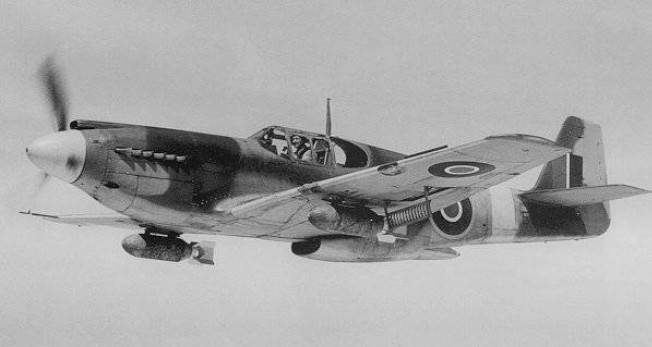
A-36A Apache
The first Mustang fighters appeared in RAF combat squadrons in early 1942. The aircraft had excellent aerodynamics, was easy to fly and had good maneuverability.
However, the Allison V-1710-39 engine installed on the Mustang I fighter lost power significantly after climbing over 4 meters. Considering that air battles over the British Isles were mainly held at medium and high altitudes, the combat value of the first Mustang as an interceptor was not high. In this regard, the entire batch of American-made fighters was transferred to the Tactical Air Command, which directly interacted with army units.
British pilots flying the Mustangs of the first modification were mainly engaged in low-altitude photographic reconnaissance, free hunting on railways and roads, and attacking pinpoint ground targets along the coast. Later, their tasks included the interception of single German aircraft trying at low altitude, out of sight of British radar, to break through and strike at targets in the UK.
With the success of the low-altitude Mustang fighter, in April 1942, North American received an order to build a purely attack aircraft that could drop bombs from a dive. In total, it was supposed to build 500 aircraft.
The strike A-36A had a maximum takeoff weight of 4 kg. The practical flight range was 535 km. Allison 1-200 liquid-cooled engine with a capacity of 1710 hp. With. in level flight could accelerate the aircraft to 87 km / h. Built-in armament included six 1 mm machine guns. The combat load initially consisted of two 325-kg (587-pound) bombs, later incendiary tanks with napalm began to be hung on the dive bomber.
Due to the fact that the Apache could develop a very high speed in a steep peak, perforated brake flaps were installed on the A-36A to ensure safe bombing.
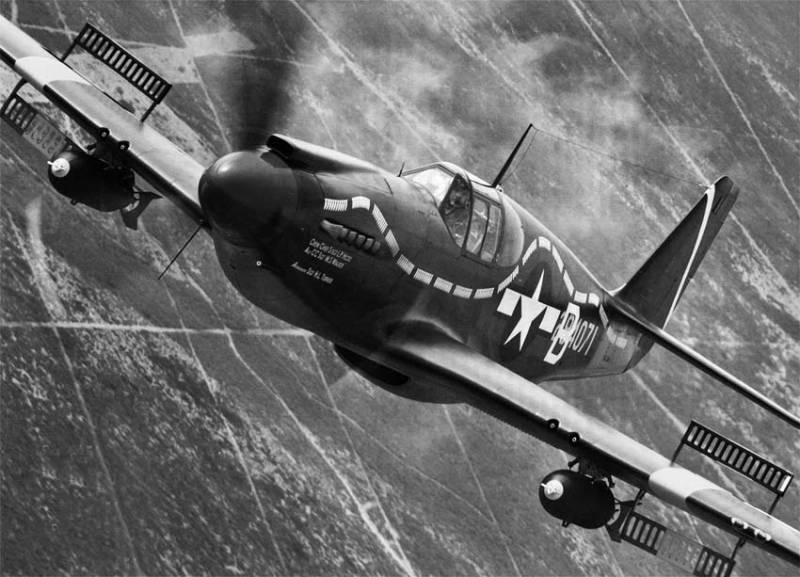
The first combat use of Apaches occurred in July 1942. The pilots of the 27th Light Bomber Group and the 86th Dive Bomber Group operating in Italy began their first combat missions, attacking targets in Sicily, and over 1 sorties were flown within a month. In August 000, both groups were renamed fighter-bomber.
At the initial stage, A-36A pilots mainly bombed from a dive. Usually, sorties were made as part of a group of 4–6 aircraft, which alternately swooped down on the target from a height of 1–200 m, while the bombing accuracy was quite high. After the bombs were dropped, the target was often fired upon with machine guns, making 1-500 combat runs.
The designers and command believed that the key to the invulnerability of the Apaches was their high speed. This was partly true, but the rather high characteristics of German small-caliber anti-aircraft artillery and the level of training of anti-aircraft crews were not taken into account. When making repeated visits to the target, the anti-aircraft gunners had time to react and shoot, and the losses of the dive bombers were often very significant. In addition, when diving at high speed, the aircraft often became unstable, which was associated with abnormal operation of the aerodynamic brakes.
To reduce losses, a different tactic was used: all bombs were dropped in one run, bombing was carried out from a shallower dive angle and from a greater height. This allowed to reduce losses, but the accuracy of bombing dropped significantly.
Observers noted that the A-36A operated very successfully in places of accumulation of armored vehicles and transport columns. However, 500-pound bombs were ill-suited for use against tanks deployed in battle formation. The combat effectiveness of "Apache" against tanks could be significantly higher when using incendiary tanks with napalm. But incendiary tanks were mainly used against the Japanese, in the jungles of Burma.
It is worth noting that the Apache was not an easy opponent for enemy fighters and could well stand up for itself, but most often fighter-bombers, due to their high flight speed, broke away from enemy interceptors.
At a certain stage of the hostilities, the Apaches played a very prominent role, having a significant impact on the course of hostilities in certain sectors of the front. So, in September 1943, A-36A fighter-bombers and R-38 heavy fighters provided almost decisive assistance to units of the 5th US Army in the Apennines, which found themselves in a very difficult situation. Thanks to a series of successful strikes against enemy concentration points, bridges and communications, the offensive impulse of the German troops was stopped.
It was the Apache pilots who developed the tactics that later turned out to be the most successful. Instead of chasing enemy tanks on the battlefield, they tried to cover them while moving in columns along narrow roads, having previously destroyed bridges and crossings or creating blockages from broken vehicles at key crossroads and mountain roads.
In total, A-36A fighter-bombers made 23 sorties in the Mediterranean and Far Eastern theaters, during which more than 373 tons of bombs were dropped. In air battles, A-8A shot down 000 enemy aircraft. Own losses amounted to 36 units. Most of the lost Apaches were hit by anti-aircraft fire.
The combat career of the A-36A in US Air Force combat squadrons ended in the first half of 1944, when the P-51D Mustang and P-47D Thunderbolt fighters began to arrive en masse.
Fighter-bombers P-51D Mustang and P-47D Thunderbolt and their weapons used against armored vehicles
By the time the Allied troops landed in northern France, American P-51 and P-47 escort fighters, thanks to their increased flight range, could accompany bombers in raids over the entire territory of Germany. Their characteristics improved so much that they became able to confidently withstand any Luftwaffe aircraft.
On the way back, the pilots of the Mustangs and Thunderbolts often fired at ground targets with machine guns. It also turned out that these aircraft, in the case of suspension of bombs and missiles, are capable of effectively providing close air support to ground units and fighting tanks.
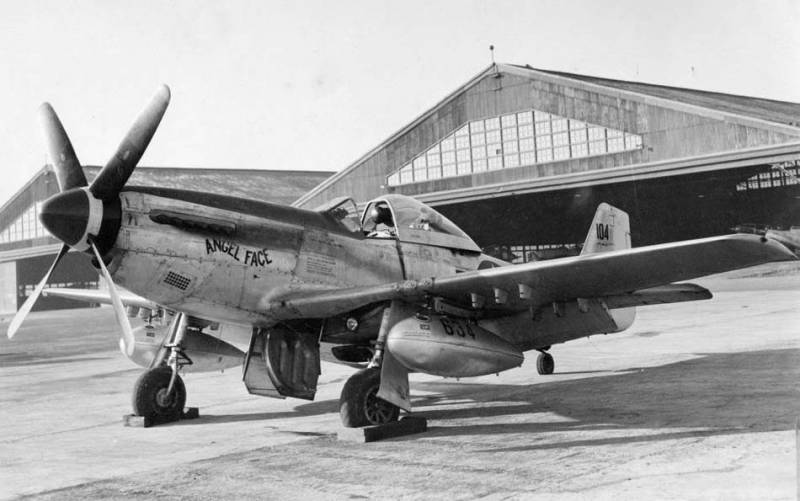
P-51D Mustang
The Mustang was not only very beautiful, but also one of the fastest American piston fighters of the Second World War. After the R-51D received the Rolls-Royce Merlin V-1650-7 engine with a maximum power of 1 hp. with., he could accelerate in horizontal flight to 695 km / h. With a maximum takeoff weight of 705 kg, the combat radius was 5 km.
The built-in armament of the Mustang was standard for American fighter aircraft - six 12,7-mm Brownings. Reinforced bomb racks were installed on the R-51D. Now the fighter-bomber could carry two bombs of 454 kg each - at that time it was a normal bomb load for a front-line bomber. Accordingly, instead of bombs, it was possible to take rockets or external tanks of a larger capacity.
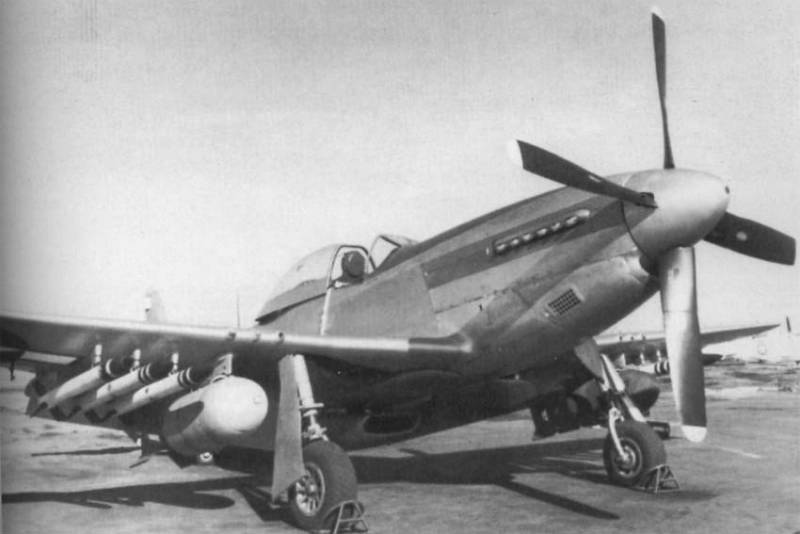
The P-51D modification fighter became the most massive in the Mustang family, more than 7 units were built. Although the aircraft had a liquid-cooled engine, which was less resistant to combat damage than an air-cooled engine, this did not become an obstacle to the active use of Mustangs in strike missions.
The Thunderbolt was not as sleek as the Mustang and did not have as good aerodynamics. But this aircraft was a vivid example of the fact that a very powerful engine is capable of providing sufficiently high flight data for a car that does not shine with the perfection of forms.
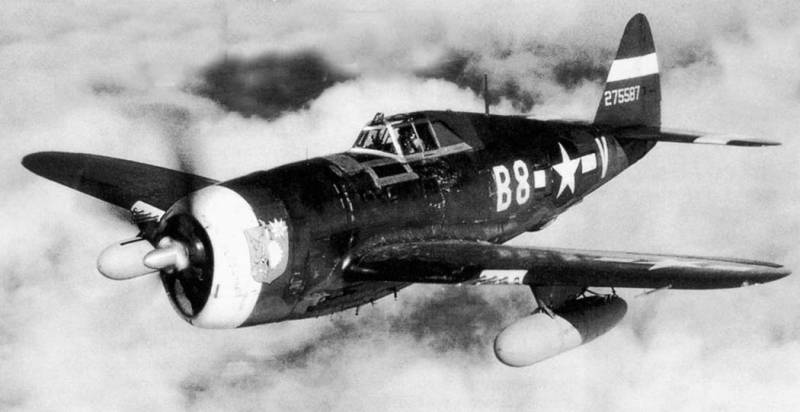
R-47D Thunderbolt
Pratt Whitney R-2800-63 air-cooled engine with 2 hp afterburner. With. provided in horizontal flight a speed of a little more than 300 km / h. The maximum takeoff weight was 700 kg. Such a heavy aircraft, equipped with a very powerful engine, had no equal in diving, which American pilots often used when it was necessary to break away from enemy fighters. In a steep fall, the P-7D could exceed the speed of 998 km / h. The flight range made it possible to escort long-range bombers. When using PTB - 47 km.
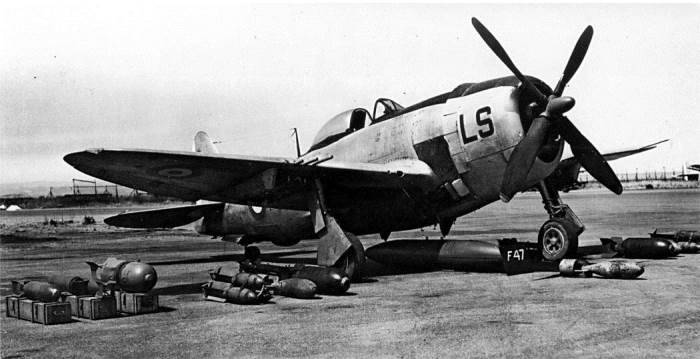
The armament of the P-47D was very powerful - eight 12,7 mm machine guns. As a fighter-bomber, the P-47D could carry up to 1 kg of bombs: two 135 kg bombs under the wings and one 454 kg bomb under the fuselage.
"Thunderbolts" actively fought in all theaters, in total, the customer accepted 12 fighters of the P-602D modification.
When American fighter-bomber pilots had to operate against enemy armor, they preferred to use rockets.
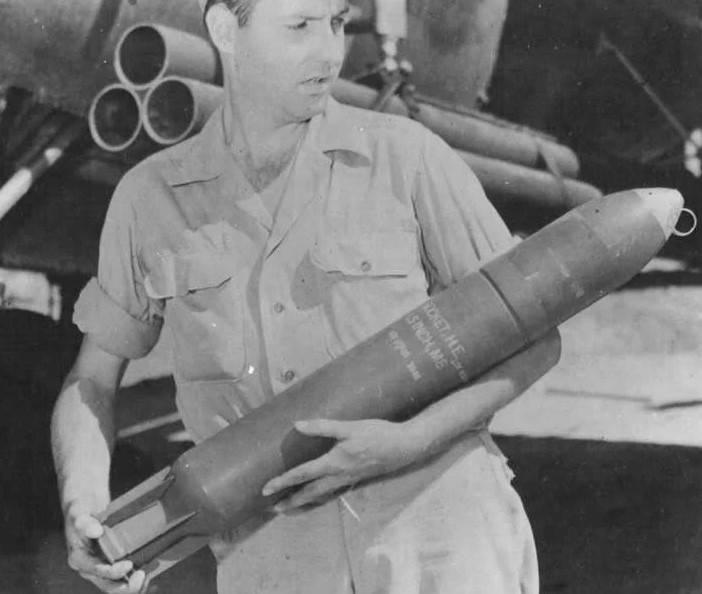
An American soldier holds a 114-mm unguided rocket M8A2 in his hands
The American 114-mm (4,5-inch) M8 rocket compared to the British RP-3 rocket had a much more advanced design, better aerodynamic launchers, good weight perfection and high firing accuracy. This was achieved due to the successful layout and the use of spring-loaded stabilizers, which opened when the rocket exited the tubular launcher.
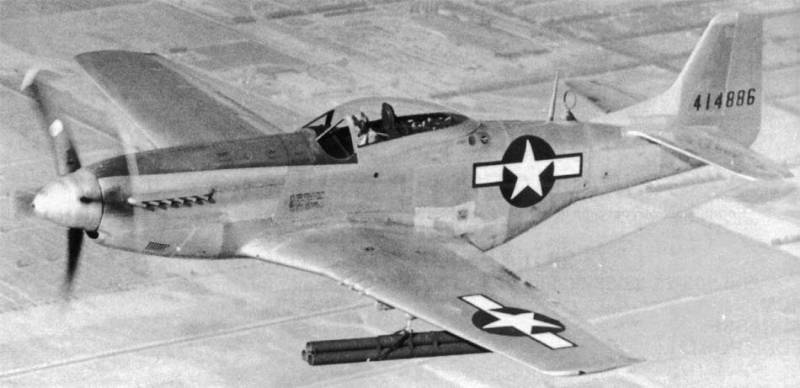
Fighter-bomber P-51D with PU NAR M8
The M8 rocket had a mass of 17,6 kg and a length of 911 mm. An engine containing 2,16 kg of solid fuel accelerated it to 260 m/s. In practice, the speed of the rocket was summed up with the speed of the launch vehicle. High-explosive warhead contained 1,9 kg of TNT. In the event of a direct hit by a rocket with a high-explosive warhead, it broke through armor up to 30 mm thick. There was also an armor-piercing modification with a steel blank, which, with a direct hit, could penetrate 45–50 mm armor, but such missiles were rarely used.
The combat use of M8 rockets began in the spring of 1943. The first carrier of M8 missiles was the P-40 Tomahawk fighter, but subsequently these NARs became very widespread and were used on single-engine and twin-engine American combat aircraft.
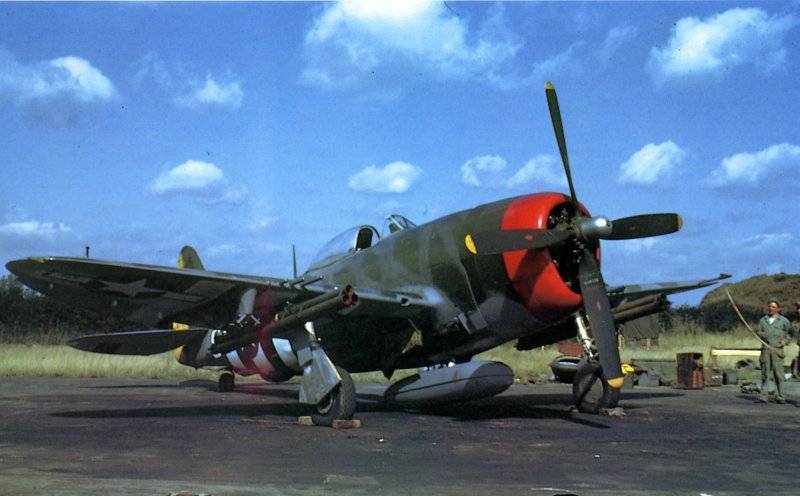
P-47D fighter-bomber with M8 missile launchers
At the end of 1943, the improved M8A2 and M8A3 models went into production. These modifications received folding stabilizers with an increased area, which improved stability after launch. The mass of explosives in the warhead increased by 200 g. Thanks to the use of a new gunpowder formulation, the thrust of the sustainer rocket engine was increased, which in turn had a beneficial effect on accuracy and firing range.
In total, more than 1945 million 2,5-mm aircraft rockets were produced before the beginning of 114.
In general, the NAR M8 family turned out to be very successful. In terms of firing accuracy, 114-mm American aircraft missiles were about 3 times superior to British RP-2s. At the same time, having a good effect on manpower and poorly protected targets, M8 rockets could not always hit heavy armored vehicles and pillboxes even with a direct hit. In this regard, in 1944, the 127-mm NAR 5HVAR (English High Velocity Aircraft Rocket - high-speed aircraft rocket) was adopted by the American aviation. In the US Air Force, she received the informal name "Holy Moses" (Holy Moses).
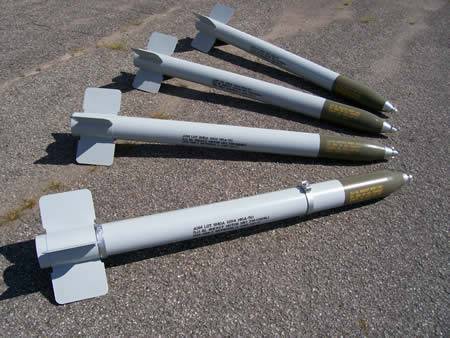
127-mm HAP 5HVAR
As a high-explosive fragmentation part of the 5HVAR rocket, a 127-mm artillery shell weighing 20,4 kg, equipped with 3,5 kg of TNT, was used. Without taking into account the speed of the carrier aircraft, a rocket projectile with a length of 1,83 m and a mass of 64 kg was accelerated by a sustainer solid-propellant engine to 420 m/s.
To destroy armored targets, a missile with a solid steel warhead, with a carbide tip, was intended. According to American data, a 127-mm NAR with a solid steel armor-piercing warhead was capable of penetrating the frontal armor of the German Tiger, and a high-explosive fragmentation rocket, in the event of a direct hit, was guaranteed to disable medium tanks and self-propelled guns based on them.
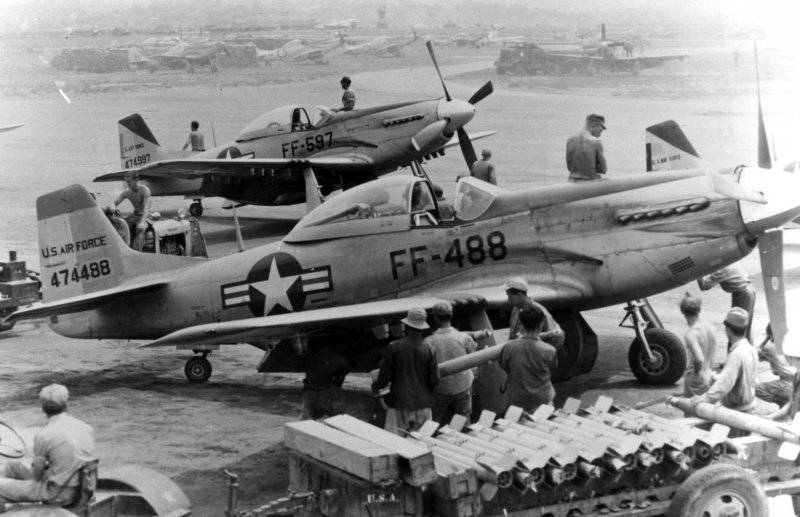
In tests with 5-inch high-explosive fragmentation rockets, it was possible to break through 57-mm cemented ship armor. In the immediate vicinity of the point of explosion, fragments could pierce armor 12–15 mm thick. Despite the fact that this rocket used clumsy cruciform stabilizers, it was not inferior to the M8 in terms of launch accuracy.
According to the complex of service and operational and combat characteristics, the 127-mm 5HVAR is considered the most advanced type of unguided aircraft rockets used by the Americans during World War II. They became widespread in the allied countries of the United States and were in service in a number of states until the end of the 1990s.
American fighter-bombers often dropped 113-kg, 227-kg and even 454-kg bombs on German armored vehicles. At the same time, in order to avoid being hit by fragments of their own bombs, it was necessary to strictly limit the minimum drop height or use deceleration fuses. Also from the middle of 1944 in Europe, single-engine attack aircraft began to drop 625-liter tanks with napalm, but they were used relatively infrequently.
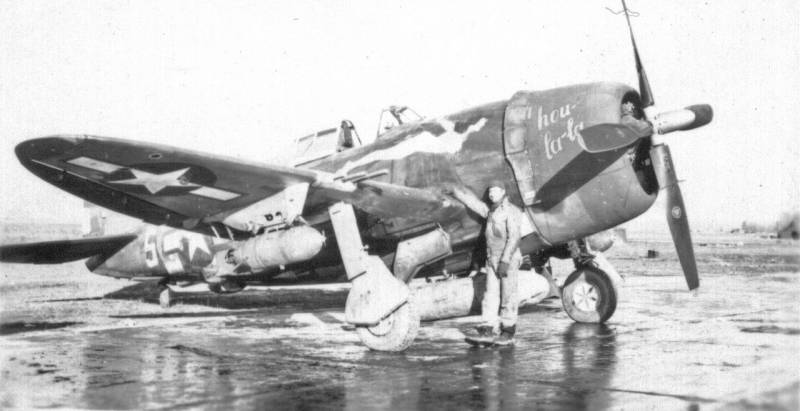
More heavy-lifting Thunderbolts were more often used as bomb carriers, and rockets were usually hung under the wings of the Mustangs. It is clear that the P-47D was much inferior in bombing accuracy to specialized dive bombers, but given the caliber of the bombs dropped from the Thunderbolts, the magnitude of the miss often did not matter.
The effectiveness of American aviation against German tanks
The Americans were largely forced to use fighter-bombers to solve strike missions. However, this decision turned out to be quite successful, which is associated with the specific conditions of hostilities in Western Europe. By the time the Allies landed in Normandy, the main best German flight personnel were ground on the Eastern Front or defended the German skies from devastating heavy bomber raids.
Even with serviceable fighters in the Luftwaffe, they often could not take to the air due to a chronic shortage of aviation gasoline. And the German anti-aircraft artillery on the Western Front in 1944 was not at all the same as, say, in 1942 in the East. It is not surprising that under these conditions, unarmored Mustangs and Thunderbolts dominated the battlefield and piracy in the enemy's near rear.
A typical American fighter-bomber tactic was a surprise attack from a shallow dive. When operating on columns, railway junctions, artillery positions and other targets behind the German defense line, repeated combat visits in order to avoid losses from anti-aircraft fire, as a rule, were not carried out. American pilots, providing close air support to their units, also tried to inflict "lightning strikes", after which they carried out low-altitude escape.
Unlike the Soviet Il-2, they did not iron the target, making several attacks, and, accordingly, the losses of American fighter-bombers from small-caliber anti-aircraft artillery were minimal. With such tactics, taking into account the total superiority of the allies in the air and the number of American strike aircraft flying out daily on combat missions, it was impossible for the Germans in the daytime in flying weather to make any movement along the roads in the front line.
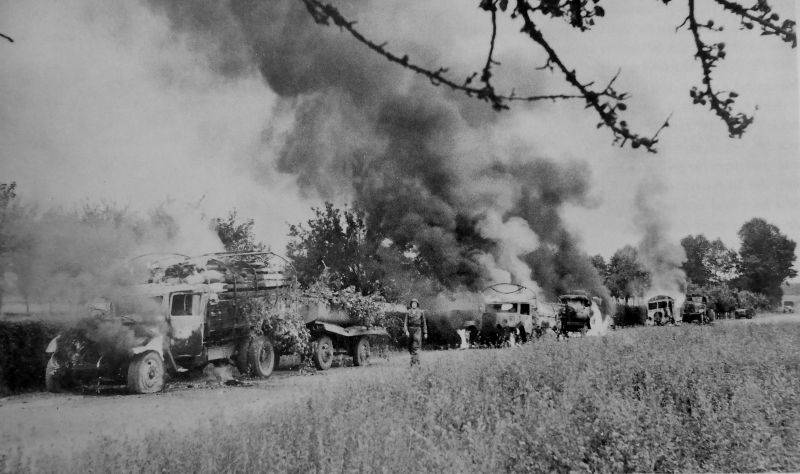
The incessant attacks from the air had a debilitating effect on the tankers. As the Germans themselves said, on the Western Front they developed a “German look” - the personnel of the Panzerwaffe, even far from the front line, constantly looked at the sky with alarm in anticipation of an air raid.
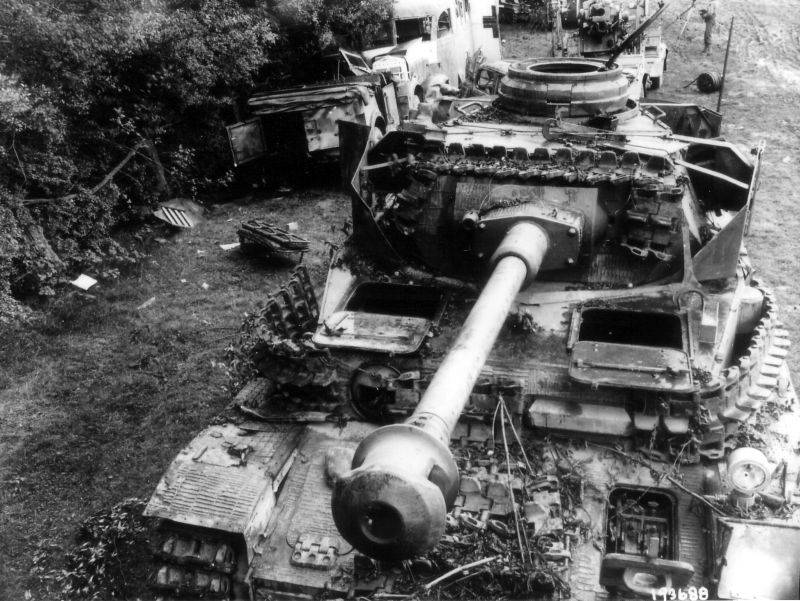
In general, the average effectiveness of the R-51D and R-47D bombing and assault strikes using bombs and missiles was about the same as that of Soviet or German attack aircraft. Thus, under ideal test site conditions, missiles managed to hit a stationary target in 6-8% of launches.
Things were no better with the accuracy of rockets on the battlefield. So, when examining the wrecked and destroyed German armored vehicles at the site of the battles in the Ardennes, it turned out that only 6 tanks and self-propelled guns were hit by rockets, although the pilots claimed that they managed to hit 66 armored vehicles. During a massive missile attack on a tank column of about fifty tanks on a highway in the vicinity of La Baleine in France, 17 units were declared destroyed. During the survey of the air strike site, only 9 tanks were found on the spot, and only two of them could not be restored.
Given the total air superiority that the Allies had at the final stage of the war, the Americans could use all the combat aircraft they had, including heavy bombers, against German tanks. There are many cases when dozens of B-17 and B-24 heavy bombers were involved in the bombing of German tank units, which swept away enemy concentration areas with carpet bombing. After such massive bombings, even the surviving crews on serviceable tanks often lost their combat capability due to the strongest moral shock.
The direct hunt for German armored vehicles was not as effective in terms of reducing the combat capability of the enemy as paralyzing strikes on German transport communications. Much more effective were attacks against unarmored targets such as trains, tractors, trucks, and fuel trucks.
Allied fighter-bombers in the daytime, under good weather conditions, reliably blocked the movement of German troops, made it impossible to transport ammunition, fuel, food and evacuate damaged equipment. This circumstance most negatively affected the capabilities of the German troops. German tankers, left without fuel, ammunition and spare parts, were forced to abandon their vehicles.
Thus, American fighter-bombers, unable to hit most of the enemy armored vehicles, became the most effective anti-tank weapon, depriving the enemy of supplies.
Information